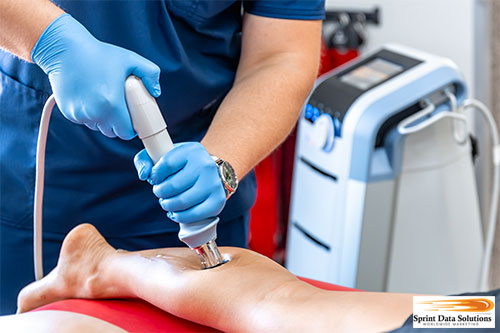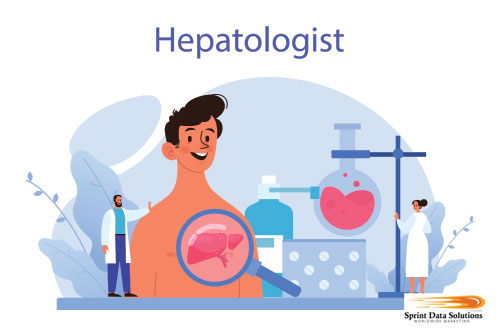Addressing American Health Needs with Targeted Products & Services
With a population surpassing 330 million, the United States faces a growing array of complex and interrelated health challenges affecting individuals across all demographics and socioeconomic strata. Americans contend with an expanding spectrum of medical conditions, shaped by a multifaceted interplay of factors including genetic predisposition, environmental exposures, occupational hazards, and evolving lifestyle behaviors. Notably, suboptimal nutrition, sedentary habits, inadequate sleep, substance use, and chronic stress contribute significantly to the development and progression of numerous diseases. The prevalence of chronic conditions-such as type 2 diabetes, hypertension, cardiovascular disease, obesity, respiratory ailments, and mental health disorders-has reached alarming levels, placing immense strain on public health infrastructure and financial systems. Moreover, widening disparities in healthcare access, often driven by income inequality, geographic isolation, systemic racism, and insurance gaps, further exacerbate existing health inequities, particularly among minority and underserved populations.

As a result, there is a growing and persistent demand for solutions that effectively address or help manage various health conditions. Millions of Americans are proactively seeking out products and services that cater to their individual health needs-favoring options that are convenient, easy to access, and maintain a sense of privacy. This shift is especially evident in the rising interest in digital health tools, wellness subscriptions, telemedicine, and personalized care offerings. Companies that recognize and respond to these preferences can successfully tap into a thriving and evolving market by delivering innovative, targeted solutions that not only alleviate health-related challenges but also empower consumers to take control of their well-being in more flexible and user-centric ways.
Examples of conditions requiring tailored products and services include:
Support for Genital Warts Sufferers
Genital warts remain a deeply personal and emotionally charged health concern, affecting millions globally and often associated with a heavy burden of shame, social stigma, and mental distress. Because of the highly sensitive nature of the condition, many individuals shy away from traditional in-person medical consultations, fearing judgment or breaches of privacy. This has catalyzed a noticeable shift toward private, discreet treatment alternatives-particularly those that can be accessed remotely or delivered directly to the patient’s home. As a result, the market for genital wart solutions has expanded rapidly, favoring products and services that prioritize anonymity, accessibility, and emotional support.
Online and mail-order treatment options have emerged as a cornerstone of this evolving landscape, catering to consumers seeking both discretion and effectiveness. Over-the-counter topical treatments, natural or herbal formulations, and telehealth consultations with licensed medical providers have gained substantial traction. These offerings are often paired with educational resources designed to inform without overwhelming, empowering sufferers to take control of their condition with dignity. In this context, transparency, clinical validity, and empathetic engagement become critical differentiators.
For businesses operating in this space, the opportunity lies not just in offering products but in cultivating a safe and non-judgmental environment. Confidential service, rapid and unbranded shipping, user-friendly digital platforms, and round-the-clock support are becoming expected standards. Additionally, integrating professional guidance-such as pharmacist consultations or follow-up support-can further enhance trust and customer loyalty.
The genital wart treatment sector, though niche, is significantly underserved in terms of compassionate care and user-centric innovation. Companies that align themselves with values of respect, privacy, and scientific credibility can position themselves as market leaders. Success in this arena comes from addressing both the physical and emotional dimensions of the condition-providing solutions that heal not only the body but also restore confidence and peace of mind.
By strategically addressing the diverse and often complex health challenges faced by specific populations, businesses can unlock substantial opportunities to deliver not only commercial success but also lasting societal value. The growing convergence of rising consumer expectations for accessible, affordable, and personalized healthcare with the rapid evolution of digital technologies has fueled a dynamic transformation across the industry. Today’s solutions span a broad spectrum-from traditional in-person clinical services to innovative digital tools such as AI-driven telehealth platforms, wearable health monitoring devices, precision wellness programs, and flexible, subscription-based care models. These advancements are revolutionizing how care is accessed, delivered, and experienced-particularly in underserved or geographically isolated communities where traditional care infrastructure is limited or absent. Moreover, this shift empowers businesses to reimagine their roles, aligning their strategies with public health priorities to drive measurable improvements in outcomes, enhance consumer engagement, and build sustainable trust. Companies that embed health equity and innovation into their core missions are not only positioning themselves at the forefront of the healthcare revolution but are also contributing to a more inclusive, resilient, and future-ready global health ecosystem.

Insomnia Sufferers
Insomnia is a persistent and often debilitating sleep disorder marked by difficulty initiating sleep, maintaining sleep continuity, or experiencing premature awakenings with an inability to return to rest. Affecting an estimated 50–70 million Americans annually, its underlying causes span a broad spectrum. Physiological contributors include chronic pain conditions (e.g., arthritis, fibromyalgia), hormonal disruptions (such as thyroid imbalances or perimenopausal changes), respiratory disorders, and neurological diseases. Equally significant are psychological factors-ranging from generalized anxiety and major depression to situational stressors like grief, financial strain, or trauma-which can disrupt sleep cycles by increasing nighttime arousal or disturbing REM patterns. Additionally, behavioral and environmental influences such as erratic sleep routines, late-night digital device use, shift work, alcohol and caffeine intake, or inadequate exposure to natural light exacerbate the issue by disrupting circadian rhythms and sleep pressure.
Erectile Dysfunction
Erectile dysfunction (ED) is a prevalent medical condition characterized by the consistent inability to attain or sustain an erection adequate for satisfactory sexual activity. Though it becomes increasingly common with age, ED is not solely a problem of older men-young and middle-aged individuals are also susceptible due to a complex interplay of physiological, psychological, and lifestyle-related factors. Cardiovascular disease, hypertension, diabetes, obesity, neurological disorders, and hormonal imbalances are among the most common physical contributors. Psychological influences such as performance anxiety, depression, chronic stress, and strained interpersonal relationships further compound the issue. Moreover, side effects from certain medications, substance use, and poor sleep patterns have been shown to impair erectile function.
Despite its widespread nature, ED remains stigmatized, leading many men to suffer in silence and delay treatment. This cultural silence has spurred the rapid expansion of confidential and tech-enabled solutions. Telemedicine platforms now provide discreet, round-the-clock access to licensed clinicians who can evaluate symptoms, prescribe FDA-approved medications such as sildenafil (Viagra) or tadalafil (Cialis), and arrange confidential shipping to ensure privacy. In parallel, innovation in wearable sexual health devices-ranging from nocturnal tumescence monitors to app-integrated pelvic floor trainers-offers men new avenues for diagnosis, performance tracking, and biofeedback-based interventions.
Atopic Eczema Sufferers

Atopic eczema, or atopic dermatitis, is a chronic, immune-mediated skin disorder characterized by persistent xerosis (dryness), pruritus (itching), erythema, and recurrent inflammatory episodes. It affects individuals at every stage of life, from infancy to late adulthood, with early onset often associated with a family history of atopy, including asthma and allergic rhinitis. The disease not only impairs skin barrier function but also disrupts the microbiome, making patients more susceptible to secondary infections (e.g., Staphylococcus aureus colonization), heightened allergen penetration, and systemic inflammation. Beyond the physical discomfort, it significantly impairs mental health, contributing to anxiety, depression, and poor sleep quality, thereby reducing overall quality of life. Long-term management strategies emphasize restoration of the epidermal barrier through daily use of ceramide-rich emollients, targeted anti-inflammatory treatments such as topical corticosteroids and calcineurin inhibitors, and the growing use of systemic biologics like dupilumab for moderate-to-severe cases. Advances in precision medicine have led to the development of non-steroidal agents (e.g., JAK inhibitors), phototherapy protocols, and wearable sensors for real-time monitoring of disease activity. Meanwhile, increased public and clinical emphasis on non-pharmacological interventions-including allergen avoidance, stress reduction, diet optimization, and the use of clean-label, fragrance-free skincare-reflects a broader shift toward integrative dermatology that tailors treatment to individual skin phenotypes and environmental triggers.
Sleep Apnea Sufferers
Sleep apnea is a chronic and potentially life-threatening sleep disorder marked by repeated pauses in breathing during sleep, often hundreds of times per night. These disruptions fragment the natural sleep cycle, depriving the brain and body of restorative rest. The most prevalent form, obstructive sleep apnea (OSA), occurs when the muscles of the throat relax excessively, leading to airway collapse and obstruction. Central sleep apnea (CSA), though less common, results from the brain failing to send proper signals to the respiratory muscles. A third, more complex form-mixed or complex sleep apnea-features components of both OSA and CSA.
A hallmark symptom of sleep apnea is persistent, loud snoring, often accompanied by choking or gasping episodes. However, its effects go far beyond simple noise. Sufferers frequently experience chronic daytime fatigue, poor concentration, irritability, memory lapses, and even depression due to the severe sleep fragmentation. Over time, untreated sleep apnea can contribute to a host of serious health conditions, including resistant hypertension, arrhythmias, coronary artery disease, stroke, metabolic syndrome, type 2 diabetes, liver dysfunction, and an increased risk of premature mortality.
The global sleep apnea market is undergoing a dynamic expansion driven by rising awareness, improved diagnostic capabilities, and increasing prevalence linked to aging populations and obesity rates. At the core of therapy remain CPAP (Continuous Positive Airway Pressure) machines, still considered the benchmark for treating obstructive sleep apnea (OSA) by delivering a continuous stream of pressurized air to keep airways open during sleep. Yet, innovation is rapidly transforming these systems: next-gen devices now include auto-titrating PAP models that automatically adjust pressure levels, compact travel-friendly units, and ultra-quiet designs with improved humidification and mobile integration.
Simultaneously, non-invasive diagnostic solutions are gaining traction. AI-enhanced at-home sleep studies, wearable biometric trackers, and connected health platforms are replacing traditional polysomnography in many cases, making screening more accessible. For patients with mild to moderate apnea or intolerance to CPAP, alternative treatments such as mandibular advancement devices (oral appliances), positional therapy wearables, nasal dilators, and anti-snoring tools provide effective relief. In severe or refractory cases, surgical options-such as UPPP (uvulopalatopharyngoplasty), Inspire therapy (a surgically implanted hypoglossal nerve stimulator), and maxillomandibular advancement-may be employed with strong long-term outcomes.
Anaphylaxis

Anaphylaxis represents one of the most acute and life-threatening systemic allergic reactions, necessitating immediate and decisive medical action. Characterized by the sudden onset of multi-organ involvement-most critically the respiratory and cardiovascular systems-this condition can progress within minutes to airway constriction, hypotension, shock, and even fatality if left untreated. It is commonly triggered by allergens such as certain foods (e.g., peanuts, shellfish), medications (like penicillin), insect stings, and latex. The clinical profile often begins with itching, hives, or swelling and quickly escalates to throat closure, bronchospasm, severe hypotension, and loss of consciousness. This rapid deterioration underscores the non-negotiable need for immediate intervention tools and has catalyzed a surge in demand for responsive medical technologies and comprehensive care ecosystems.
In the emergency preparedness sector, epinephrine auto-injectors (EAIs) remain the gold standard of first-line treatment. Modern EAIs have evolved far beyond simple injection devices; today’s market leaders feature intuitive voice-assisted guidance, ergonomic designs suited for all age groups, temperature-stable formulations, and even real-time geolocation features that notify emergency services or pre-designated contacts. These technological advancements have significantly enhanced usability, ensuring that even untrained bystanders can administer life-saving treatment effectively during critical moments.
Simultaneously, digital integration is transforming the paradigm of emergency response. Smart wearables embedded with allergy-specific health profiles and reactive alert systems are now empowering users with a higher degree of personal safety. Compact, portable medical kits-some with AI-enabled diagnostic tools-offer added reassurance, especially in high-risk settings such as schools, workplaces, and travel scenarios. Yet despite these innovations, a reactive approach alone is insufficient.
This reality has given rise to a complementary and equally crucial trend: preventive and personalized allergy risk management. Increasingly, individuals and healthcare providers are seeking upstream solutions, such as allergen-specific immunotherapies, predictive diagnostics, and continuous digital monitoring tools that track environmental exposures and symptom trends. Machine learning algorithms now aid clinicians in identifying at-risk populations, optimizing treatment pathways, and even tailoring lifestyle recommendations. The rise of patient-centric platforms allows individuals to participate in shared decision-making, improving adherence and long-term outcomes.
The anaphylaxis care continuum exemplifies a broader shift in health systems-from fragmented, symptom-driven responses to integrated, anticipatory, and empathetic models of care. This approach recognizes that chronic and acute conditions do not exist in isolation; they are intertwined with emotional well-being, socioeconomic factors, access disparities, and cultural contexts. Thus, products and services that succeed in this space are those that extend beyond clinical utility to support daily life, emotional resilience, and inclusive community engagement.
Businesses and healthcare innovators have an unprecedented opportunity to lead this transformation. By embracing design thinking, equity-centered innovation, and affordability frameworks, companies can develop holistic solutions that reflect the complex, lived experiences of those with allergic and chronic conditions. The most impactful offerings will not simply manage emergencies-they will empower people to live fully, confidently, and safely. In doing so, organizations build not only market value but also lasting trust, bridging gaps in care and redefining what it means to thrive with vulnerability.
Cellulitis Sufferers
Cellulitis is a frequently encountered bacterial skin infection that targets the dermis and subcutaneous tissue, typically caused by Streptococcus or Staphylococcus species, including MRSA in resistant cases. It often manifests as an area of erythema (redness), warmth, swelling (edema), and pain or tenderness, frequently affecting the lower extremities. In more severe instances, systemic symptoms such as fever, chills, fatigue, and lymphadenopathy may be present. Without prompt medical intervention, the infection can advance swiftly, infiltrating the lymphatic system or bloodstream, which may lead to complications such as lymphangitis, abscesses, or even life-threatening sepsis.
Timely and appropriate antibiotic therapy is the cornerstone of treatment. Mild cases are generally managed with oral antibiotics such as cephalexin, dicloxacillin, or clindamycin, while severe or rapidly spreading infections may require hospitalization and intravenous antibiotics. Close clinical monitoring is essential to assess therapeutic response, detect any signs of deterioration, and prevent recurrence, especially in patients with comorbidities like diabetes or peripheral vascular disease.
Cystitis Sufferers

Cystitis, a form of bladder inflammation most commonly triggered by urinary tract infections (UTIs), is a prevalent health issue, especially among women. Anatomical differences such as a shorter urethra, along with hormonal fluctuations, significantly increase susceptibility, making it one of the most frequent bacterial infections in women globally. Statistics indicate that over 50% of women will experience at least one UTI during their lifetime, with a notable portion suffering from recurrent episodes. These recurring infections can lead to considerable physical discomfort-ranging from a burning sensation during urination and lower abdominal pain to frequent, urgent urination-and can also take a toll on mental well-being, productivity, and daily activities.
While antibiotics have traditionally been the frontline treatment for cystitis, concerns over antibiotic resistance and recurrent infections have spurred interest in preventative and non-pharmacological interventions. Nutraceuticals like D-mannose, which may prevent E. coli from adhering to the bladder wall, and cranberry extract, rich in proanthocyanidins, have been widely adopted for their natural, evidence-supported role in reducing infection frequency. Additionally, urogenital-specific probiotics help maintain a balanced microbiota, which may serve as a protective barrier against pathogenic bacteria. For symptomatic relief, over-the-counter medications such as phenazopyridine offer temporary relief from pain, urgency, and discomfort during active flare-ups.
In parallel, the digital health revolution has reshaped how cystitis is diagnosed and managed. Telehealth services now provide rapid, often 24/7, access to clinicians who can offer consultations, prescriptions, and lab requisitions remotely-eliminating long clinic waits and enhancing privacy. Some platforms also provide guided home urine testing kits with results reviewed in real time. Complementing this are subscription-based services that supply monthly UTI-prevention packages, including supplements, hydration aids, and test strips, along with tailored medical support and educational resources. These integrated solutions emphasize convenience, personalization, and continuity of care, marking a transformative shift toward proactive and holistic bladder health management.
Abdominal Aortic Aneurysms
Abdominal aortic aneurysms (AAA) are a critical vascular disorder marked by the pathological dilation of the abdominal portion of the aorta, the body’s principal conduit for oxygenated blood. This condition predominantly affects older adults, particularly males over the age of 65 with a history of smoking or cardiovascular disease. If undiagnosed or inadequately managed, AAA may progress silently until rupture occurs-a medical emergency with a mortality rate exceeding 80% due to rapid internal hemorrhage. Early-stage AAAs are often asymptomatic and are typically identified via routine imaging such as abdominal ultrasound or CT scans. Once detected, ongoing surveillance and preventive intervention become vital to mitigate expansion and avoid surgical emergencies.
Effective AAA management emphasizes multifactorial strategies: maintaining optimal blood pressure through ACE inhibitors or beta blockers, smoking cessation to reduce vascular wall degradation, anti-inflammatory nutritional support, and adoption of a Mediterranean-style diet low in sodium and saturated fat. Regular moderate-intensity exercise, under physician guidance, helps improve overall vascular health without placing undue strain on the aorta. Statin therapy is often indicated to control dyslipidemia, further reducing cardiovascular risks associated with aneurysm progression.
Sickle Cell Disease
Sickle cell disease (SCD) is a chronic, inherited blood disorder resulting from a mutation in the HBB gene, which encodes the beta-globin subunit of hemoglobin. This mutation leads to the production of abnormal hemoglobin S (HbS), causing red blood cells to assume a rigid, crescent or “sickle” shape under conditions of low oxygen. Unlike normal disc-shaped red blood cells that can move easily through blood vessels, sickled cells are stiff and sticky, leading to impaired circulation. These deformed cells can obstruct blood flow, triggering painful vaso-occlusive crises (VOCs), and are prone to premature breakdown, resulting in chronic hemolytic anemia. Over time, the repeated episodes of vascular blockage and reduced oxygen delivery can lead to cumulative organ damage, increasing the risk of complications such as stroke, acute chest syndrome, pulmonary hypertension, kidney failure, and infections due to functional asplenia.

Effective management of SCD demands a proactive, multidisciplinary approach tailored to the individual. First-line pharmacologic treatment often includes hydroxyurea, which promotes the production of fetal hemoglobin (HbF) to reduce sickling and lower the frequency of VOCs, hospitalizations, and transfusion needs. Recent advances have introduced disease-modifying agents like voxelotor, which increases hemoglobin’s affinity for oxygen to prevent polymerization of HbS, and crizanlizumab, a monoclonal antibody that inhibits P-selectin to reduce cell adhesion and inflammation. These therapies provide targeted relief and have significantly improved quality of life and long-term outcomes.
In addition to pharmacologic interventions, comprehensive care includes regular health screenings, prophylactic vaccinations, penicillin prophylaxis in children, and chronic transfusion therapy in select patients to reduce the risk of stroke or treat severe anemia. Curative options, such as hematopoietic stem cell transplantation (HSCT) and emerging gene-editing therapies (e.g., CRISPR-based techniques), are being explored for eligible patients, offering hope for a permanent solution.
Supportive strategies play a crucial role in reducing morbidity. These include maintaining adequate hydration, avoiding extreme temperatures, managing psychosocial stress, and practicing healthy lifestyle habits. Comprehensive education and psychosocial support empower patients and caregivers to manage the disease proactively. Advances in care coordination and specialized sickle cell centers have further enhanced patient outcomes and life expectancy, marking a significant evolution in the standard of care for this complex genetic disorder.
Varicose Vein Sufferers
Varicose veins, often dismissed as a cosmetic nuisance, are frequently indicative of chronic venous insufficiency-a progressive condition where malfunctioning valves in the veins hinder efficient blood flow back to the heart. This venous reflux leads to blood pooling in the lower extremities, resulting in symptoms that range from mild discomfort to debilitating pain. Common manifestations include throbbing, cramping, a sensation of heaviness or fatigue in the legs, localized edema, hyperpigmentation, and, in severe cases, venous ulcers or lipodermatosclerosis. While cosmetic concerns remain valid, the underlying pathology necessitates medical attention.

Management begins with conservative therapy: compression stockings are the gold standard, improving venous return and mitigating swelling. Adjunctive measures such as elevating the legs, avoiding prolonged standing, and initiating low-impact exercise (e.g., walking, cycling, or swimming) help improve muscle pump function and circulation. However, for persistent or complicated cases, numerous minimally invasive techniques offer safe, effective, and outpatient-friendly alternatives. These include endovenous laser therapy (EVLT), radiofrequency ablation (RFA), mechanochemical ablation, and ultrasound-guided foam sclerotherapy-each offering targeted vein closure with minimal scarring and fast recovery.
Stroke Survivors
Stroke survivors often endure a multifaceted and evolving set of long-term challenges that require comprehensive, interdisciplinary care tailored to individual needs. Physical impairments are among the most visible and disruptive outcomes, including hemiplegia, spasticity, reduced coordination, chronic fatigue, and impaired balance-each of which can significantly hinder functional mobility and self-care. Rehabilitation strategies typically encompass a coordinated regimen of physical therapy to improve strength and gait, occupational therapy for relearning daily activities, and speech-language pathology to address speech, swallowing, and communication deficits. Modern rehabilitation increasingly leverages assistive and adaptive technologies such as robotic exoskeletons, neuromuscular stimulation devices, voice-activated home assistants, and AI-powered mobility aids. Customized wheelchairs, orthotic devices, grab bars, and home modifications also play critical roles in promoting autonomy.
Cognitive impairments-ranging from memory loss and attention deficits to reduced problem-solving capacity-are equally pervasive. These deficits often necessitate the use of structured cognitive rehabilitation, memory aids, task-management tools, and digital cognitive training platforms that employ gamification and machine learning to enhance engagement and adaptability. Social cognition and executive dysfunction may also require behavioral interventions and caregiver support.

Psychosocial challenges present another critical dimension of post-stroke recovery. Depression, anxiety, apathy, and emotional lability are common, frequently exacerbated by sudden loss of independence and changes in identity. Effective psychological support includes a combination of individual therapy, pharmacological treatment, caregiver counseling, peer-led recovery groups, and access to digital mental wellness platforms such as mindfulness apps and telepsychiatry. Social reintegration programs are also emerging as vital tools to rebuild community participation and self-esteem.
The rise of telehealth has revolutionized access to stroke care, particularly in rural or underserved areas. Remote monitoring systems, virtual rehabilitation platforms, and app-based therapy trackers now allow clinicians to adjust treatment plans in real time, ensuring continuity of care. As stroke recovery is inherently personal and dynamic, there is growing emphasis on personalized care pathways supported by data-driven insights and inclusive design. This trend is driving innovation in specialized equipment, adaptive software, and cross-sector collaboration to better address the diverse trajectories of stroke recovery.
Liver Disease Sufferers
Liver disease encompasses a broad spectrum of disorders with complex clinical manifestations, often necessitating lifelong, multidisciplinary care to address symptoms like jaundice, ascites, pruritus, encephalopathy, and progressive fatigue. Although liver transplantation remains the gold standard for patients with decompensated cirrhosis or hepatocellular carcinoma, the majority of individuals with chronic liver conditions are managed through conservative approaches emphasizing early intervention and functional preservation. Central to this strategy is nutritional therapy, increasingly supported by targeted supplementation. Agents such as silymarin (from milk thistle), N-acetylcysteine (NAC), and vitamin E are gaining prominence for their antioxidative, anti-inflammatory, and antifibrotic actions, supported by emerging clinical evidence in non-alcoholic fatty liver disease (NAFLD) and hepatitis-related injury.
Diabetes Type II

Type 2 diabetes is a widespread chronic metabolic disorder impacting over 500 million people globally. Its management demands a multifaceted, lifelong approach combining lifestyle intervention, pharmacotherapy, and digital health innovation. Foundational to care are evidence-based lifestyle modifications-emphasizing a diet low in refined carbohydrates and high in fiber, routine physical activity, and sustained weight management. Alongside oral antidiabetic drugs and injectable therapies like GLP-1 receptor agonists or insulin, regular blood glucose monitoring remains critical to avoiding complications such as neuropathy, nephropathy, and cardiovascular disease.
The landscape of diabetes technology has evolved rapidly. Core tools now include continuous glucose monitors (CGMs), which offer real-time, interstitial glucose readings; closed-loop insulin delivery systems that integrate with CGMs to automate insulin dosing; and smart insulin pens that track dosage history and sync with mobile apps. The food industry has responded by expanding low-glycemic and carbohydrate-conscious nutrition offerings, making it easier for patients to stabilize blood sugar without sacrificing variety or flavor.
Arthritis Sufferers
Arthritis is a chronic, often progressive inflammatory condition that affects the joints, causing symptoms such as pain, swelling, stiffness, and diminished mobility. Though frequently associated with aging, arthritis affects individuals of all ages, including children (juvenile idiopathic arthritis) and young adults. The disease encompasses over 100 types, with osteoarthritis (OA) and rheumatoid arthritis (RA) being the most common. OA arises from the gradual breakdown of cartilage due to wear and tear, while RA is an autoimmune condition wherein the immune system mistakenly attacks joint tissues, leading to systemic inflammation and joint damage. Other forms, such as psoriatic arthritis, gout, and ankylosing spondylitis, present unique challenges and require individualized treatment strategies. Management is multifaceted and tailored based on the type and severity of the disease. Conventional options include nonsteroidal anti-inflammatory drugs (NSAIDs) and corticosteroids to alleviate symptoms, while disease-modifying antirheumatic drugs (DMARDs) like methotrexate help slow progression. Biologics and targeted synthetic DMARDs, including TNF inhibitors and JAK inhibitors, have revolutionized treatment, particularly for autoimmune variants, by directly targeting inflammatory pathways. Physical therapy, exercise, weight management, and dietary modifications also play crucial roles in long-term outcomes and joint function. As chronic diseases like arthritis grow more prevalent, especially in aging and underserved populations, the global healthcare ecosystem must evolve. Businesses have a unique opportunity to develop accessible, tech-enabled solutions-such as digital symptom trackers, wearable health devices, and tele-rheumatology platforms-that empower patients and improve care delivery. By prioritizing innovation, inclusivity, and patient-centric care models, industries can enhance health equity while generating economic growth. Those who recognize the multifaceted nature of arthritis and chronic illness will be at the forefront of transforming global health infrastructure, delivering value not only to patients but also to the broader economy.

Asthma Sufferers
Asthma is a chronic inflammatory disease of the airways that affects more than 300 million individuals worldwide and can develop at any age. It is characterized by recurring symptoms such as wheezing, breathlessness, chest tightness, and coughing, particularly at night or in the early morning. These symptoms result from airway hyperresponsiveness and obstruction, which may be reversible with medication. Triggers include allergens, pollution, respiratory infections, exercise, and stress. Severity varies widely, from mild to potentially life-threatening. With accurate diagnosis, regular monitoring, and a personalized treatment plan-often including inhaled corticosteroids and bronchodilators-most patients can achieve good symptom control, minimize flare-ups, and maintain an active, fulfilling lifestyle.
Ulcer Sufferers

Inhaled corticosteroids remain the foundation of long-term asthma management, effectively controlling airway inflammation and reducing exacerbation risks. However, optimal asthma care requires an integrative, patient-centered approach. Environmental strategies, including HEPA air purifiers and allergen-proof bedding, minimize exposure to triggers like pollen, mold, and pet dander. Digital tools-such as wearable sensors, AI-powered asthma apps, and telehealth platforms-enable real-time monitoring of respiratory parameters and provide personalized treatment guidance. These technologies support early symptom detection, improve adherence, and reduce emergency visits. Complementary interventions like smoking cessation, allergen immunotherapy, structured education, and tailored exercise plans (e.g., swimming or yoga) foster holistic control. Multidisciplinary collaboration is essential for sustainable, outcome-driven asthma care.
Bipolar Disorder

Bipolar disorder is a chronic, multifaceted psychiatric illness marked by alternating episodes of mania or hypomania and depression, often disrupting emotional regulation, cognition, and daily functioning. These mood shifts can impair personal relationships, occupational performance, and social stability. Effective management centers on pharmacological interventions, primarily mood stabilizers like lithium or valproate, and atypical antipsychotics such as quetiapine, olanzapine, or lurasidone, which help stabilize mood and reduce relapse. However, medication alone often falls short. Evidence-based psychotherapies-including cognitive behavioral therapy, psychoeducation, and interpersonal and social rhythm therapy-enhance outcomes by improving medication adherence, emotional regulation, and lifestyle consistency, emphasizing a holistic, long-term approach to improving stability, functionality, and quality of life.
Allergy Sufferers
Allergies affect a diverse global population, with triggers spanning environmental exposures to specific food proteins. Common airborne allergens-such as pollen, dust mites, pet dander, and mold spores-lead to seasonal or perennial allergic rhinitis, while food allergens like peanuts, tree nuts, dairy, eggs, soy, wheat, and shellfish account for most dietary-induced allergic reactions. These responses can vary in severity from mild symptoms, including nasal congestion, hives, or watery eyes, to severe manifestations like asthma exacerbations and life-threatening anaphylaxis. In response to this complexity, the allergy care landscape has rapidly diversified. Symptomatic treatments include second-generation, non-sedating antihistamines, intranasal corticosteroids, leukotriene receptor antagonists, and decongestants. For severe or chronic cases, monoclonal antibody-based biologics such as omalizumab (anti-IgE) and dupilumab (IL-4/IL-13 inhibitor) offer targeted relief. Epinephrine auto-injectors remain critical for emergency anaphylaxis intervention. Preventive options have expanded significantly through immunotherapy: subcutaneous immunotherapy (SCIT) and sublingual immunotherapy (SLIT) are now widely accepted for inducing long-term tolerance, especially in allergic rhinitis and insect venom hypersensitivity. Precision diagnostics-including component-resolved diagnostics (CRD) and multiplex assays-enable clinicians to pinpoint specific IgE sensitization profiles, facilitating individualized treatment. Technological innovation further enhances allergy care, with smart inhalers, wearable air quality monitors, and mobile apps providing real-time allergen exposure tracking, adherence support, and patient education. Environmental changes-including rising pollution levels, urbanization, and dietary shifts-are linked to the increasing global allergy burden, particularly among children. Meanwhile, climate change is altering pollen patterns and allergenicity, compounding symptom severity. This complex and evolving landscape underscores the need for integrative, personalized, and tech-enabled management strategies. As demand grows, the allergy sector is poised for sustained scientific advancement, market expansion, and improved patient outcomes through multidisciplinary, preventive, and precision-driven approaches.
Chronic Obstructive Pulmonary Disease (COPD) Sufferers
Chronic Obstructive Pulmonary Disease (COPD) is a prevalent, preventable, and treatable respiratory condition characterized by persistent respiratory symptoms and airflow limitation due to airway and/or alveolar abnormalities, usually caused by significant exposure to noxious particles or gases-most commonly from cigarette smoke, but also from biomass fuel exposure and occupational pollutants. COPD encompasses two primary pathological processes: chronic bronchitis, defined by chronic productive cough for at least three months in two consecutive years, and emphysema, involving permanent enlargement of airspaces distal to the terminal bronchioles and destruction of alveolar walls. Patients commonly present with chronic cough, sputum production, wheezing, chest tightness, and progressive exertional dyspnea. Unlike asthma, COPD involves largely irreversible airflow obstruction and is associated with structural lung remodeling, small airway narrowing, and loss of elastic recoil. Diagnosis relies on spirometry demonstrating a post-bronchodilator FEV₁/FVC ratio of less than 0.70. Management includes smoking cessation as the most critical intervention, pharmacotherapy with long-acting bronchodilators (LABAs, LAMAs), and in some cases, inhaled corticosteroids (ICS) for patients with frequent exacerbations. Pulmonary rehabilitation improves exercise tolerance and symptoms, while vaccinations (influenza, pneumococcal, COVID-19) reduce infection-related exacerbations. Nutritional counseling, psychological support, and regular physical activity are integral to holistic care. In advanced disease, long-term oxygen therapy and surgical interventions like lung volume reduction or transplantation may be considered. COPD is also associated with systemic manifestations and comorbidities such as cardiovascular disease, osteoporosis, and depression, necessitating a multidisciplinary care approach. Early diagnosis and personalized treatment strategies are essential for optimizing long-term outcomes and quality of life.
Seasonal Depression
Seasonal Affective Disorder (SAD) is a subtype of major depressive disorder characterized by a recurring pattern of depressive episodes that occur at specific times of the year-most commonly in the late fall and winter when daylight hours decrease. This condition is particularly prevalent in higher latitudes, where reduced sunlight disrupts the body’s circadian rhythm, alters melatonin secretion, and lowers serotonin levels, all of which contribute to mood dysregulation. The result is a combination of symptoms such as persistent sadness, fatigue, excessive sleep (hypersomnia), increased appetite with cravings for carbohydrates, weight gain, difficulty concentrating, and a tendency to socially withdraw.
Diagnosis typically requires the presence of seasonal patterns for at least two consecutive years, without non-seasonal depressive episodes during the same period. Treatment strategies are multifaceted, blending both conventional and integrative approaches. Bright light therapy remains a cornerstone treatment, utilizing a 10,000-lux light box for about 20–30 minutes daily, ideally in the morning. This non-invasive intervention can rebalance circadian rhythms and enhance mood-regulating neurochemicals. Vitamin D supplementation is frequently recommended, especially in individuals with documented deficiencies, as lower levels during winter months have been linked to increased depressive symptoms. Additional interventions may include cognitive behavioral therapy (CBT) tailored for SAD, which addresses negative thought patterns and promotes behavioral activation. In some cases, antidepressant medications such as SSRIs may be considered. Lifestyle measures like regular exercise, maximizing natural light exposure, maintaining social engagement, and practicing mindfulness can also support emotional well-being and mitigate symptom severity throughout the darker months.
Hypertension Sufferers
Hypertension, or high blood pressure, is a pervasive and chronic cardiovascular disorder affecting over a billion people globally. Often asymptomatic until significant organ damage occurs, it earns the title “the silent killer” due to its stealthy progression and potentially devastating consequences. Uncontrolled hypertension substantially increases the risk of life-threatening complications such as myocardial infarction (heart attacks), cerebrovascular accidents (strokes), heart failure, chronic kidney disease, hypertensive retinopathy, and vascular dementia. The underlying mechanisms involve persistent arterial pressure that strains blood vessel walls, leading to endothelial dysfunction, arterial stiffening, and progressive damage to organs like the brain, heart, kidneys, and eyes. Effective management is multifactorial, encompassing both pharmacologic and non-pharmacologic strategies. First-line antihypertensive agents-including ACE inhibitors, angiotensin receptor blockers (ARBs), calcium channel blockers, beta-blockers, and diuretics-are often prescribed based on individual risk profiles and comorbidities. However, sustainable blood pressure control requires an integrative approach: dietary modifications such as the DASH (Dietary Approaches to Stop Hypertension) diet, sodium restriction, potassium enrichme
Chronic Fatigue Syndrome (CFS)
Myalgic Encephalomyelitis/Chronic Fatigue Syndrome (ME/CFS) is a disabling, multisystem disease marked by persistent, unexplained fatigue that is not improved by rest and significantly impairs daily activities. A defining feature is post-exertional malaise (PEM), the exacerbation of symptoms following even minor physical, emotional, or cognitive effort. Beyond fatigue, individuals often report cognitive dysfunction (“brain fog”), unrefreshing sleep, widespread pain, orthostatic intolerance (including dizziness and rapid heartbeat upon standing), recurrent headaches, gastrointestinal disturbances, and hypersensitivities to light, sound, or touch. The illness exists on a broad severity spectrum: some individuals may engage in limited part-time work, while others remain housebound or bedbound for years. ME/CFS is notoriously difficult to diagnose, as no single biomarker or definitive test exists. Diagnosis relies on clinical evaluation, application of criteria (e.g., IOM or Canadian Consensus), and the exclusion of other conditions. Management is personalized and aimed at improving quality of life rather than achieving cure. Core strategies include pacing to avoid PEM-often aided by heart rate monitoring-sleep optimization through behavioral and pharmacologic methods, and targeted treatments for symptoms such as pain, orthostatic intolerance, and gastrointestinal issues. Nutritional supplementation (e.g., CoQ10, L-carnitine, magnesium) may offer support for cellular energy metabolism. CBT, once routinely prescribed, is now considered an adjunctive tool rather than primary treatment, and GET is discouraged due to risk of worsening symptoms. Psychological support is vital for addressing comorbid depression or anxiety and navigating the psychosocial burden of chronic illness. Complementary therapies like mindfulness, gentle yoga, and breathing exercises aid stress management. Adaptive tools-mobility aids, noise-canceling headphones, and ergonomic supports-enhance independence. Environmental accommodations, including light and sound reduction, can reduce sensory overload. Optimal care involves a multidisciplinary team and informed, empathetic healthcare providers, emphasizing individualized, compassionate care to support long-term stability, autonomy, and well-being in ME/CFS patients.
Psoriasis Sufferers
Psoriasis is a lifelong, immune-mediated inflammatory skin disease marked by hyperproliferation of keratinocytes, resulting in thickened, erythematous plaques with silvery scales. Affecting over 125 million individuals worldwide, it manifests beyond the skin, with up to 30% developing psoriatic arthritis and increased risk for metabolic syndrome, cardiovascular disease, type 2 diabetes, and mood disorders such as depression and anxiety. The multifaceted nature of psoriasis demands a personalized, long-term treatment strategy. Topical therapies like corticosteroids, vitamin D analogs (calcipotriol), and calcineurin inhibitors remain first-line for mild cases. For moderate-to-severe disease, systemic agents such as methotrexate, cyclosporine, and newer small-molecule inhibitors (like apremilast) are employed. Biologic therapies targeting IL-17, IL-23, and TNF-alpha pathways (e.g., secukinumab, ustekinumab, adalimumab) have revolutionized treatment, offering rapid and sustained clearance with improved safety profiles. Phototherapy, including narrowband UVB and PUVA, remains a reliable adjunct for patients unresponsive to topicals or systemics.
Recent emphasis on holistic care has fueled interest in alternative therapies such as turmeric, indigo naturalis, and cannabidiol (CBD), alongside the exploration of the gut-skin axis-linking dysbiosis and diet to systemic inflammation. Anti-inflammatory diets, gluten avoidance (especially in HLA-Cw6+ patients), and probiotics are under active investigation. Meanwhile, digital health tools and AI-driven mobile apps support adherence through symptom tracking, personalized reminders, and flare forecasting. These innovations increase patient agency, reduce clinical inertia, and enable data-driven care optimization.
Public awareness campaigns have also reduced stigma, enhanced early recognition, and improved mental health outcomes. Peer support platforms and social media advocacy are crucial for emotional resilience and shared decision-making. As the dermatological landscape becomes more patient-centric, companies integrating evidence-based science with accessible, empathetic, and tech-enabled solutions are well-positioned to drive innovation and equity in the expanding global psoriasis care market.
Managing Chronic Pain

Chronic pain, impacting over 1.5 billion people globally, is a complex, persistent condition that can arise from a wide range of underlying causes, including musculoskeletal disorders like arthritis and fibromyalgia, gastrointestinal issues such as IBS, and dermatological conditions like eczema and psoriasis. The origins of chronic pain are diverse-spanning inflammatory, neuropathic, autoimmune, and mechanical pathways-necessitating highly personalized, multimodal treatment strategies. Standard care options include prescription medications, nonsteroidal anti-inflammatory drugs (NSAIDs), corticosteroids, and physical or occupational therapy. Increasingly, patients are turning to complementary and integrative approaches, such as acupuncture, chiropractic care, myofascial release, and mind-body interventions like yoga, meditation, and biofeedback. Advances in digital health have introduced neurostimulation devices, mobile pain management apps, and virtual coaching, offering new ways to monitor and manage symptoms remotely. Psychological support is also critical, as chronic pain often coexists with depression, anxiety, and PTSD, which can intensify the perception of pain and hinder recovery. Modern pain management emphasizes a biopsychosocial model, recognizing that effective care requires addressing not only physical symptoms but also the emotional and behavioral dimensions of living with chronic pain. Consequently, personalized care plans tailored to individual health profiles, lifestyle factors, and coping mechanisms are increasingly viewed as essential for long-term relief and improved quality of life.
Controlling High Cholesterol

High cholesterol, a common health issue globally, is often attributed to modifiable lifestyle factors such as poor dietary choices, lack of physical activity, and excessive intake of saturated and trans fats. In nations celebrated for their diverse and indulgent culinary traditions, this condition becomes particularly widespread. Despite its silent progression-frequently presenting no immediate symptoms-elevated cholesterol levels significantly heighten the risk of serious cardiovascular complications, including coronary artery disease, heart attacks, and strokes. Effective management involves a combination of medical supervision, dietary improvements, and consistent physical activity. In response to this growing concern, there has been an increasing demand for accessible solutions, including heart-healthy meal options, structured fitness and wellness programs, cholesterol-lowering medications, and natural supplements such as plant sterols and omega-3 fatty acids. This trend reflects a broader societal shift toward preventive healthcare and informed lifestyle choices aimed at fostering long-term heart health.
Understanding COPD
Chronic Obstructive Pulmonary Disease (COPD) is a complex and progressive respiratory disorder that encompasses chronic bronchitis, emphysema, and, in some presentations, refractory asthma. It is marked by persistent respiratory symptoms and airflow obstruction that is not fully reversible. Common symptoms include chronic cough, sputum production, wheezing, chest tightness, and breathlessness that progressively worsens, especially during physical exertion. The most prevalent cause is prolonged inhalation of harmful particles or gases, with cigarette smoke being the leading culprit. However, occupational exposures, ambient air pollution, and rare genetic conditions such as alpha-1 antitrypsin deficiency also play crucial roles in disease onset and severity.
Effective management of COPD requires a holistic, individualized approach. Pharmacologic treatments include long-acting bronchodilators (e.g., beta-agonists and anticholinergics), inhaled corticosteroids, and combination inhalers to reduce symptoms and exacerbations. Non-pharmacologic interventions, including smoking cessation, pulmonary rehabilitation, regular vaccinations, and long-term oxygen therapy, are essential for improving quality of life and prognosis. Innovations in care are rapidly evolving, with advancements in digital health monitoring, biologic therapies targeting eosinophilic inflammation, and precision medicine approaches based on patient phenotypes and biomarkers. As research continues to unravel the molecular and structural basis of COPD, the future of care is shifting from reactive symptom management toward proactive, personalized strategies aimed at slowing disease progression and enhancing overall lung health.
Living with Lactose Intolerance

Lactose intolerance is a common digestive disorder that affects a significant proportion of the global population, particularly among individuals of Asian, African, and Indigenous descent. It results from a deficiency in lactase, the intestinal enzyme essential for digesting lactose-the natural sugar found in milk and dairy products. When lactose remains undigested, it ferments in the colon, triggering symptoms such as bloating, abdominal cramps, gas, and diarrhea, typically within 30 minutes to two hours after consumption.
Although lactose intolerance is not dangerous, it can drastically impact dietary patterns and overall nutrition, especially if dairy-a primary source of calcium, vitamin D, and protein-is removed without adequate substitutes. The condition often emerges during late childhood or adulthood and may vary in severity, from mild discomfort to complete intolerance.
Effective management hinges on dietary awareness and a strategic approach to food choices. Individuals can benefit from lactose-free dairy options, enzyme supplements (like lactase tablets), and an expanding array of plant-based alternatives including soy, almond, coconut, and oat milk. Advances in food technology have also introduced lactose-reduced yogurts, cheeses, ice creams, and baked goods that cater to diverse palates and nutritional needs.
Moreover, clearer food labeling, educational outreach, and heightened public awareness have empowered consumers to identify hidden sources of lactose in processed foods and make informed dietary decisions. With rising demand, the lactose-free market is rapidly growing-offering convenient, nutritionally fortified options that support digestive comfort without compromising health or enjoyment. For those affected, this evolving landscape means greater freedom, improved health outcomes, and a more inclusive food environment.
Cirrhosis Management
Lactose intolerance is a common digestive disorder that affects a significant proportion of the global population, particularly among individuals of Asian, African, and Indigenous descent. It results from a deficiency in lactase, the intestinal enzyme essential for digesting lactose-the natural sugar found in milk and dairy products. When lactose remains undigested, it ferments in the colon, triggering symptoms such as bloating, abdominal cramps, gas, and diarrhea, typically within 30 minutes to two hours after consumption.
Although lactose intolerance is not dangerous, it can drastically impact dietary patterns and overall nutrition, especially if dairy-a primary source of calcium, vitamin D, and protein-is removed without adequate substitutes. The condition often emerges during late childhood or adulthood and may vary in severity, from mild discomfort to complete intolerance.
Effective management hinges on dietary awareness and a strategic approach to food choices. Individuals can benefit from lactose-free dairy options, enzyme supplements (like lactase tablets), and an expanding array of plant-based alternatives including soy, almond, coconut, and oat milk. Advances in food technology have also introduced lactose-reduced yogurts, cheeses, ice creams, and baked goods that cater to diverse palates and nutritional needs.
Moreover, clearer food labeling, educational outreach, and heightened public awareness have empowered consumers to identify hidden sources of lactose in processed foods and make informed dietary decisions. With rising demand, the lactose-free market is rapidly growing-offering convenient, nutritionally fortified options that support digestive comfort without compromising health or enjoyment. For those affected, this evolving landscape means greater freedom, improved health outcomes, and a more inclusive food environment.

Combating Obesity
Obesity has emerged as one of the most critical public health crises globally, driven by a multifaceted interaction of biological, behavioral, environmental, and societal factors. While genetic predisposition, hormonal disruptions, and metabolic irregularities play contributory roles, the predominant catalysts remain sedentary lifestyles, high-caloric food consumption, and poor nutritional awareness. Defined by excessive fat accumulation that impairs health, obesity significantly elevates the risk for a multitude of life-altering conditions, including type 2 diabetes, coronary artery disease, stroke, obstructive sleep apnea, osteoarthritis, non-alcoholic fatty liver disease, and several types of cancer. These comorbidities not only diminish individual well-being and productivity but also place immense financial pressure on healthcare systems, reducing economic efficiency and straining public resources. The physical manifestations of obesity-such as reduced mobility, joint degradation, chronic fatigue, and respiratory challenges-further compound its psychological toll, often leading to depression, social stigmatization, and reduced self-esteem.

We Can Help
Sprint Data Solutions Worldwide Marketing was founded in the dynamic and entrepreneurial heart of Las Vegas, Nevada-a city renowned for its spirit of innovation and risk-taking. From its inception, the company set out to transform the direct mail advertising industry by combining the reach of traditional marketing with the precision of data-driven targeting. What began as a regional initiative quickly evolved into a powerful national presence, as Sprint Data Solutions expanded its capabilities across all 50 U.S. states, including remote regions such as Alaska and Hawaii.Driven by increasing demand and a reputation for reliable results, the company scaled beyond domestic borders, first entering the North American markets of Canada and Mexico. With continued success, Sprint Data Solutions strategically broadened its reach into the global marketplace, offering its services in major European nations such as the United Kingdom, France, and Germany. This international expansion positioned the company as a global leader in multichannel marketing solutions.At the core of Sprint Data Solutions’ success is its proprietary, meticulously curated database of consumer and business contacts. This database is continuously verified and updated to ensure the highest levels of accuracy, reliability, and relevance. It encompasses a wide range of contact types, including verified postal addresses, landline phone numbers, email addresses, and mobile contacts. This diverse data infrastructure enables clients to execute highly targeted campaigns across multiple platforms-whether through traditional direct mail, telemarketing, email marketing, SMS, or push notifications.
Sprint Data Solutions’ multichannel strategy empowers clients to reach specific demographics, industries, or geolocations with tailored messaging, maximizing campaign performance and ROI. By offering flexible engagement options, businesses can align their outreach with consumer communication preferences and market trends.
With a legacy built on integrity, innovation, and measurable outcomes, Sprint Data Solutions remains at the forefront of modern marketing. The company continues to serve as a trusted partner for organizations seeking to connect with their audiences more effectively-locally, nationally, and globally-through the intelligent use of data.
Connect With the Right Audience
Sprint Data Solutions Worldwide Marketing is a premier partner for businesses aiming to reach their most valuable audiences with accuracy and impact. Through the power of sophisticated data analytics and deep segmentation capabilities, the company enables brands to connect with prospects on a highly personalized level. Their targeting solutions go beyond basic demographics such as age, income, ethnicity, and geography-they extend into nuanced psychographic and behavioral dimensions, including lifestyle preferences, religious affiliations, personal values, and even sensitive health-related markers such as chronic conditions or specific ailments. This level of granularity empowers businesses to craft messaging that deeply resonates with the intended audience, significantly boosting engagement rates, conversions, and return on investment.
What sets Sprint Data Solutions apart is not just its data, but its full-spectrum, turnkey marketing services. The company eliminates complexity by offering end-to-end campaign management, covering everything from strategic planning and data selection to creative development, print production, mail fulfillment, and delivery logistics. This seamless integration ensures consistent branding, reduced operational burdens, and timely execution across all stages of a marketing campaign.
Whether the objective is to increase lead generation, enhance brand visibility, or penetrate hard-to-reach markets, Sprint Data Solutions provides a results-driven approach that aligns closely with client goals. With a commitment to precision, performance, and measurable success, they help businesses execute campaigns that don’t just reach people-but truly connect with them. Partner with Sprint Data Solutions to unlock the full potential of your marketing efforts and deliver messages that matter to those who matter most.






